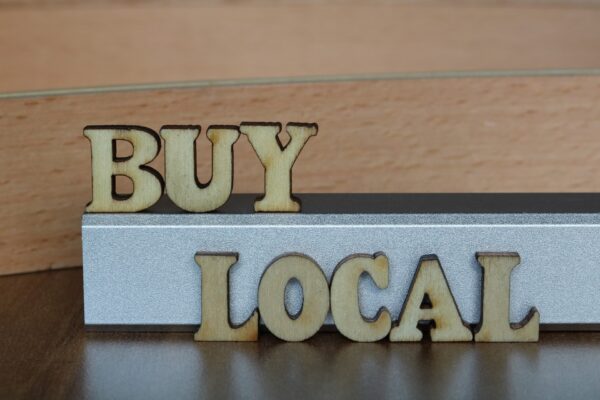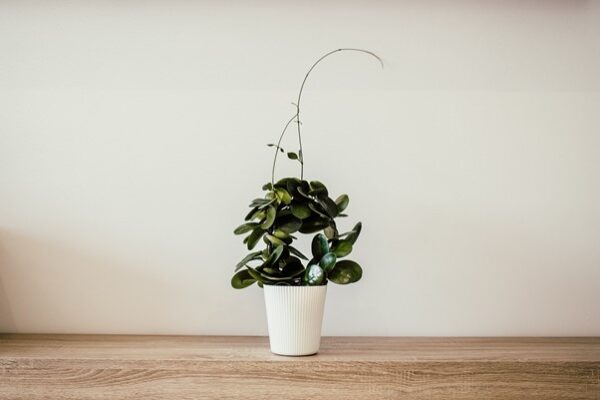
Contrary to popular belief, sustainable living isn’t synonymous with giving up comfort, style, or all of the things we enjoy. A sustainable lifestyle is about being more conscious about how and what we consume, and making positive changes to minimise our environmental impact while satisfying our needs. This may not be achieved overnight, but small steps can be taken each day to live more sustainably. Here are some tips to get you started on your journey towards a sustainable lifestyle.
- Reuse product containers.
Some jams, jellies, and even peanut butter come in beautiful glass jars that can be reused. No need for new mason jars, these can be TOTALLY Pinterest worthy! Other containers, from large drink bottles to ice cream containers can easily be reused. This is one of the most effective ways you can reduce your environmental impact while saving some money.
2. Carry your own reusable bottle.
This is literally one of the EASIEST things you can do to save resources and create less waste. And while avoiding reusable cups and bottled water is great for the environment, this also saves you money.
3. Go digital (banks, bills, subscriptions).
Going digital is a great way to improve our environmental impact. E-bills, e-magazine subscriptions, and other digital documents allow us to minimise paper use. Online banking and bill payments also help to reduce travel emissions. Not to mention, it’s super convenient for us because we get to escape long lines.
4. Buy used.
When we buy used, we extend the life of existing items. It’s an incredibly sustainable practice because no new materials are being used, and more waste isn’t created. Also, the savings can be substantial when compared to buying new. Whatever your needs – clothing, appliances, furniture, electronics, you name it, – there are many preowned items in great condition (both online and locally) that you can get your hands on.
5. Hang your laundry out to dry.
Take advantage of the FREE energy provided by the sun and place your laundry on a clothing line to dry. Only use dryers when absolutely necessary – adverse weather conditions; time constraints.
6. Have shorter showers.
I know, I too live those long hot showers, but they could use up quite a bit of water and energy. According to the EPA, showers account for 17% of water use in homes, and the Department of Energy revealed that water heating accounts for almost 17% of a home’s energy use. Further, the standard showerheads use 2.5 gallons of water per minute. Thus, by shaving just a few minutes off of our showers, we can significantly reduce our water and energy use (trust me, it adds up!).
7. Unplug/Switch off.
Turn off lights in unoccupied spaces or when not in use. Additionally, unplug chargers, appliances (please… not the fridge), and devices when not in use. Even out of use, they continue to use electricity once plugged in.
8. Make use of natural light.
Natural light is the ultimate form of sustainable lighting. By cracking open a window, drawing a curtain, removing those shades, or through skylights (if you’re fancy), your space can be well illuminated without adding to your electricity bill. Additionally, electrical lighting produces heat while daylighting can promote a cooler environment. Not only is daylighting a more environmentally friendly alternative to switching on the lights, but it’s also the more economical one.
9. Switch out your lightbulbs.
Switching to a more energy-efficient lightbulb can result in a dramatic reduction in your energy use, almost immediately! When I replaced the old incandescent bulbs in my apartment with LEDs, my monthly electricity bill was almost cut in half (not an exaggeration).
10.Buy energy-efficient appliances.
Like your lightbulbs, switching to more energy-efficient appliances is one of the fastest ways to reduce your energy bill. At the end of the life of your current appliances, whether fridge, stove, washer/dryer, consider replacing them with more energy-efficient models, or look for Energy Star certified appliances.
11. Buy a water filter.
A water filter removes contaminants and improves the taste of your water supply. This can be a great investment as it could eliminate the need for buying bottled or other forms of drinking water. This can save you a TON each year.
12. Avoid single-use items.
Much of the waste piled in landfills, drains, and unfortunately in the ocean, results from single-use items (especially plastic). This can be avoided by switching out single-use items with reusable ones such as reusable shopping bags, makeup sponges, masks, Ziploc bags, and cloth towels.
13. Repair/Repurpose.
Don’t be so quick to throw out old or damaged items and replace them with new ones. Extend the life of your items by getting them repaired. Re-upholster old furniture, repair damaged shoe soles, and replace buttons and zippers on damaged clothing. Additionally, try repurposing old items like clothing and make them into something new – distress your old jeans, or turn your maxi into a mini!
14. DIY where possible.
Use your skills or learn some new ones! These days, the internet is littered with how-to tips to help you kick start your DIY projects. DIY is a great way to extend the life of what you have, minimize waste, and even save a few dollars while helping the planet. Whether you’re upcycling or repurposing something you already own – be it furniture, décor, or even cleaning products – see how you can get your hands dirty.
15. Plan your meals.
Meal planning helps you allows you to make healthier food choices as planning ahead allows you to consider portion size, preferences, and nutrition. It’s also easier to make a grocery list that aligns with what you need to prepare those meals. This way you can avoid waste while saving time and money, by just getting what you need.
16. Start your own home garden.
A home garden gives you easy access to healthy and affordable food, and thereby promotes a nutritious diet. It also shaves money off your grocery bill. You really don’t need a lot of space. Start small with a herb garden, or plant one of your favourite produce – just get that green thumb going!
17. Create a capsule wardrobe.
Downsizing your closet is really not as scary as it sounds. The truth is, we only wear 20% of our clothes most of the time. Instead of shopping for every trend, simplify your closet to a few versatile, timeless, high-quality pieces that you LOVE to wear. This is one of the first steps towards sustainable fashion.
18. Reduce individual car use.
The idea of travelling to and fro in your own vehicle is so attractive that even for the shortest distances, we cover it by driving when we can indeed walk. Even some of us living in the same household get ready in the mornings and have breakfast together, then, despite the similarities in our journeys, are off to work in separate cars.
Reducing individual car use can significantly reduce emissions, pollution, and traffic. We can also save money on gas and parking. Further, if we take those walkable distances on foot, we can also improve our health with more exercise. While it feels great to have and enjoy your own, take pride in becoming a one-car-family, or sharing rides with friends and neighbours. Yes, it may take some collaboration and coordination, but over time, you may find it a worthwhile experience. And when you can, WALK MORE!
19. Consume less.
A major contributor to the environmental issues we currently face is that as human beings we consume too much. Consuming less means reduced pressure on natural resources, less waste, not as much clutter, and for some of us, financial freedom.



Congratulations Desiree!!! Very insightful and informative articles. Very timely and relevant blog.
Thank you!
Great idea Des I wish you all the blessings God has in store for you.
Thank you!
Awesome blog! Can’t wait to learn from your next entry.
Thanks Chene!
Great read…I should brush up in some areas lol